Floor space often comes at a premium in Japan, especially in urban centers where land is scarce and property prices are high. That has resulted in tiny homes and apartments cluttering popular neighborhoods in Tokyo and other major cities, occasionally leading to negative stereotyping of the Japanese as workaholics who only come back to their cramped rooms to sleep at the end of a long day.
The pandemic, however, has scrambled the real estate market as quarantines, states of emergencies and self-imposed isolation prompt millions to work from home and rethink their housing priorities.
Four hundred and twenty-eight of 500 teleworkers who responded to a survey conducted by job site operator Biz Hits in February said they were working either from their living room or bedroom. Almost 45% said they weren’t satisfied with their current workspace, and about a third said they wanted their own home office more than anything.
The mass proliferation of remote work may be one of the most influential legacies of COVID-19. From where and how we live and work, it has opened up new doors to innovative designs and features in housing, a trend that experts say is here to stay.
“Homes in Japan used to primarily function as places where people went back to sleep after work,” says Chihiro Shimizu, a professor at the University of Tokyo and Nihon University and an expert on real estate economics. “For many, they now also serve as an office, leisure and relaxation space, as well as a gateway that connects them to local neighborhoods, where they shop and dine much more often than before.”
As working and spending more time at home becomes commonplace, expectations toward housing are changing, Shimizu says. Properties that fulfilled their purpose when their residents were out working during the day may no longer be capable of accommodating the needs of a new generation of remote workers.
“That said, people won’t be able to enjoy the perks of cities — good schools and hospitals, nice bars and restaurants, and plenty of places to shop — if they relocate to the sticks,” Shimizu says. “So it’s a matter of finding the right balance.”
Of course, not everyone is working remotely. Those in the service industry, for example, as well as small and midsize businesses without the adequate infrastructure in place to support remote work aren’t able to adopt the new work style. In fact, the ratio of those working remotely remained at around one-fifth of the workforce over much of the past year, according to The Japan Productivity Center.
The association has been conducting regular surveys since May 2020, when Tokyo and other prefectures with high virus counts were coming out of the nation’s first state of emergency. The ratio stood at 31.5% that month, but dropped to 20.2% by July, and has been hovering around 20% ever since. In April, it was 19.2%.
A fifth of the workforce, however, is still significant enough to prompt house and apartment builders to offer new living solutions.
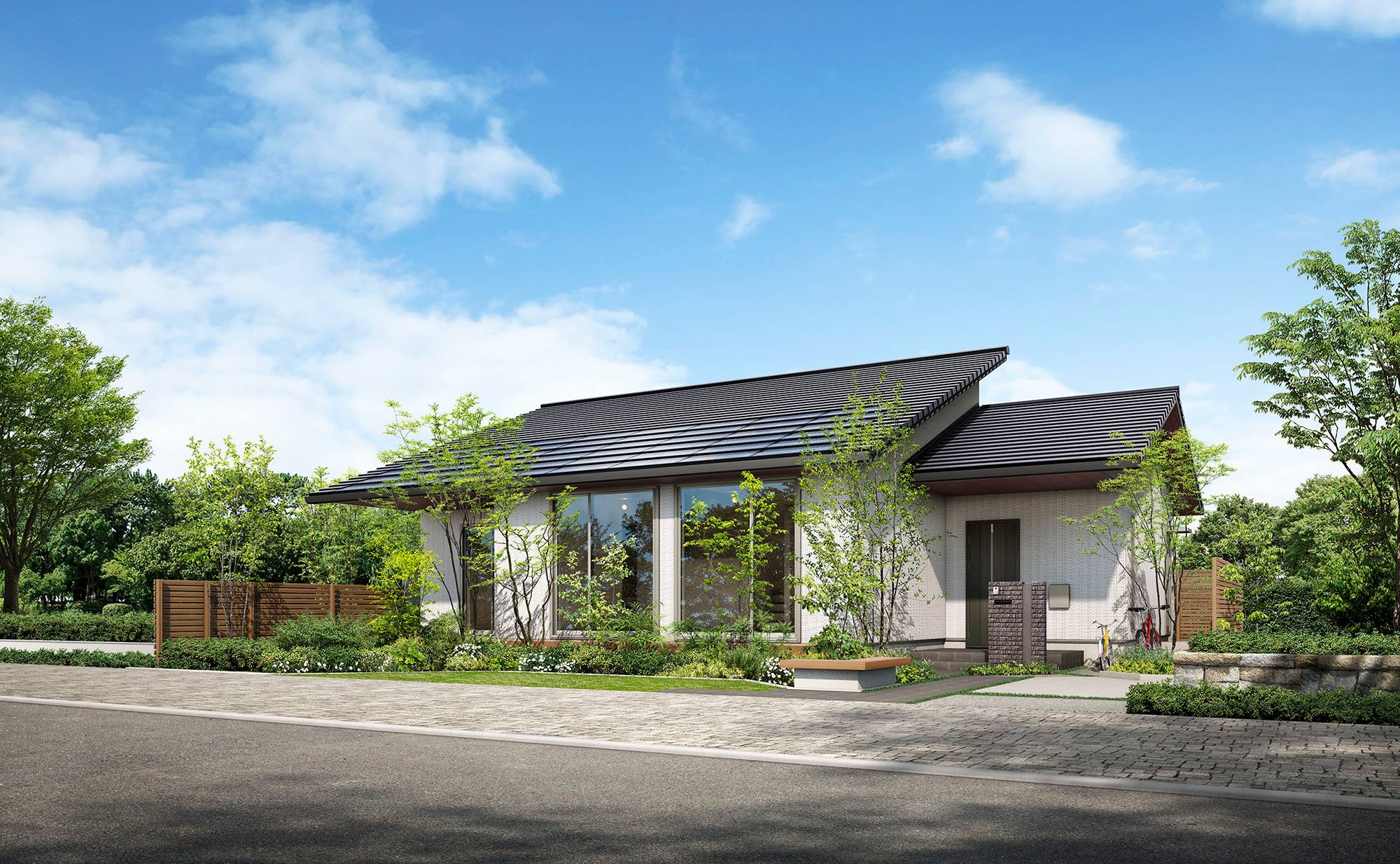
In April, Panasonic Homes Co., a fully-owned subsidiary of Prime Life Technologies Corp., a joint venture between Panasonic Corp. and Toyota Motor Corp., began offering housing design options centered around private and semi-private workspaces, disaster resiliency and cutting-edge ventilation systems.
A series of residences in its “Casart” lineup featuring both one— and two-story houses with central air-conditioning systems are being marketed as homes adapting to the so-called new normal, allowing residents plenty of space to cook, work and mingle with family, according to the company.
“Demand for one-story homes in the suburbs is rising amid the pandemic. They are especially popular among young families in their 20s and 30s, many who grew up living in apartments and who are not used to staircases,” says Ken Kamata, a manager in Panasonic Homes’ marketing division.
As families spend more time together, cramped living and dining spaces have become an issue, Kamata says. A one-story design allows plenty of open floor space, while lofts and step-down floors provide some privacy while also maintaining a sense of connection, he says.
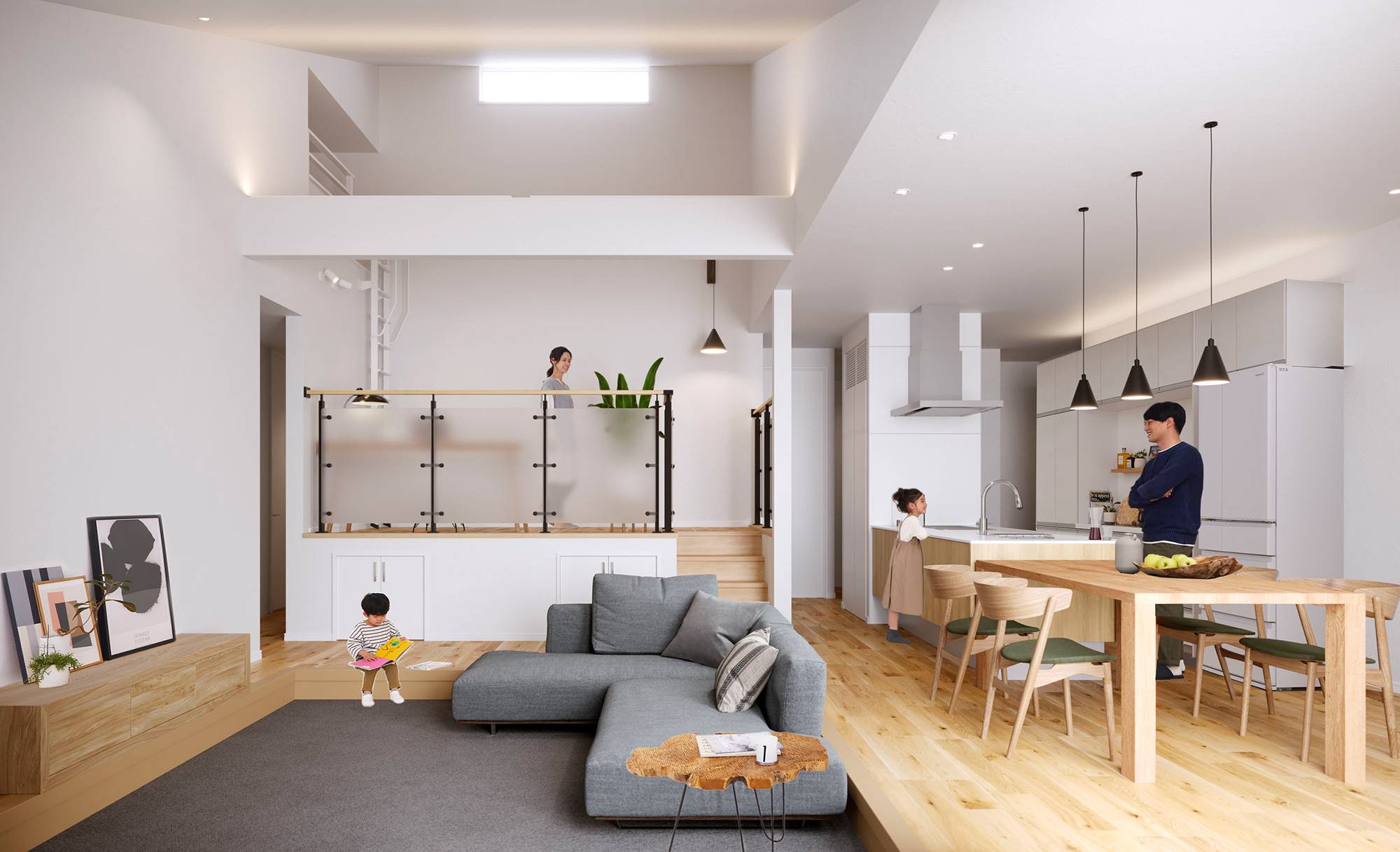


Meanwhile, the homebuilder’s two-story Casart Resilience series is constructed based on quake-resilient architecture and features a built-in 24-hour ventilation system employing high-efficiency particulate air filters that can change out the air 1½ to 4½ times an hour even with all the windows closed.
The waves of infections and states of emergency over the past year, however, saw potential homeowners hesitate to physically visit housing agents.
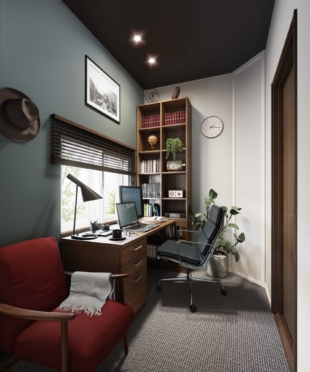


According to the results of a survey released last May by real estate site operator Lifull Co., 20.4% of 20,016 respondents who were planning to either rebuild their homes or buy new houses said they had refrained from visiting realtors due to virus risks. That, in turn, has hurt the revenue of homebuilders.
“There’s a growing need for online options that allow consumers to plan for their homes without face-to-face interactions,” says Panasonic Homes’ Saya Miura, who is in charge of Vesse, a series of budget homes that can be partially designed online by users answering simple lifestyle questions and taking part in virtual housing simulations backed by Google Cloud’s AI tools.
Hygiene is also a priority, says Aya Sato of Daiwa House Industry Co., Japan’s largest homebuilder.
Sato, a director in the company’s single family housing business division, says Daiwa House has been offering homes with sinks and closets strategically placed so residents can wash their hands upon returning home and change their clothes before entering living spaces.
The company has also been advertising homes with private studies and workstations, but not all potential home owners can afford the extra space, especially in urban areas where a few meters of land can cost hundreds of thousands of yen.
“That’s why we also offer studies in small corners and dead spaces under staircases,” Sato says.
The pandemic is driving thousands out of Tokyo. The total number of people moving out of the city surpassed those moving in by 16,938 between April and December, according to the Ministry of Internal Affairs and Communications. The capital also saw more people moving out than moving in during the eight months between July and February.
Sato says she has noticed an uptick of clients buying homes on the outskirts of the capital in areas such as Tama, a suburb of western Tokyo, and Shonan, a coastal region in Tokyo’s neighboring Kanagawa Prefecture.
“Many people no longer need to prioritize commute time when choosing a place to live,” Sato says. “But rather than taking a big leap and moving to the countryside, it seems they are attracted to areas that have good access to the city while boasting an abundance of nature.”
For those drawn to the convenience of the city, developers are offering apartments with private teleworking booths and shared workspaces for their inhabitants.
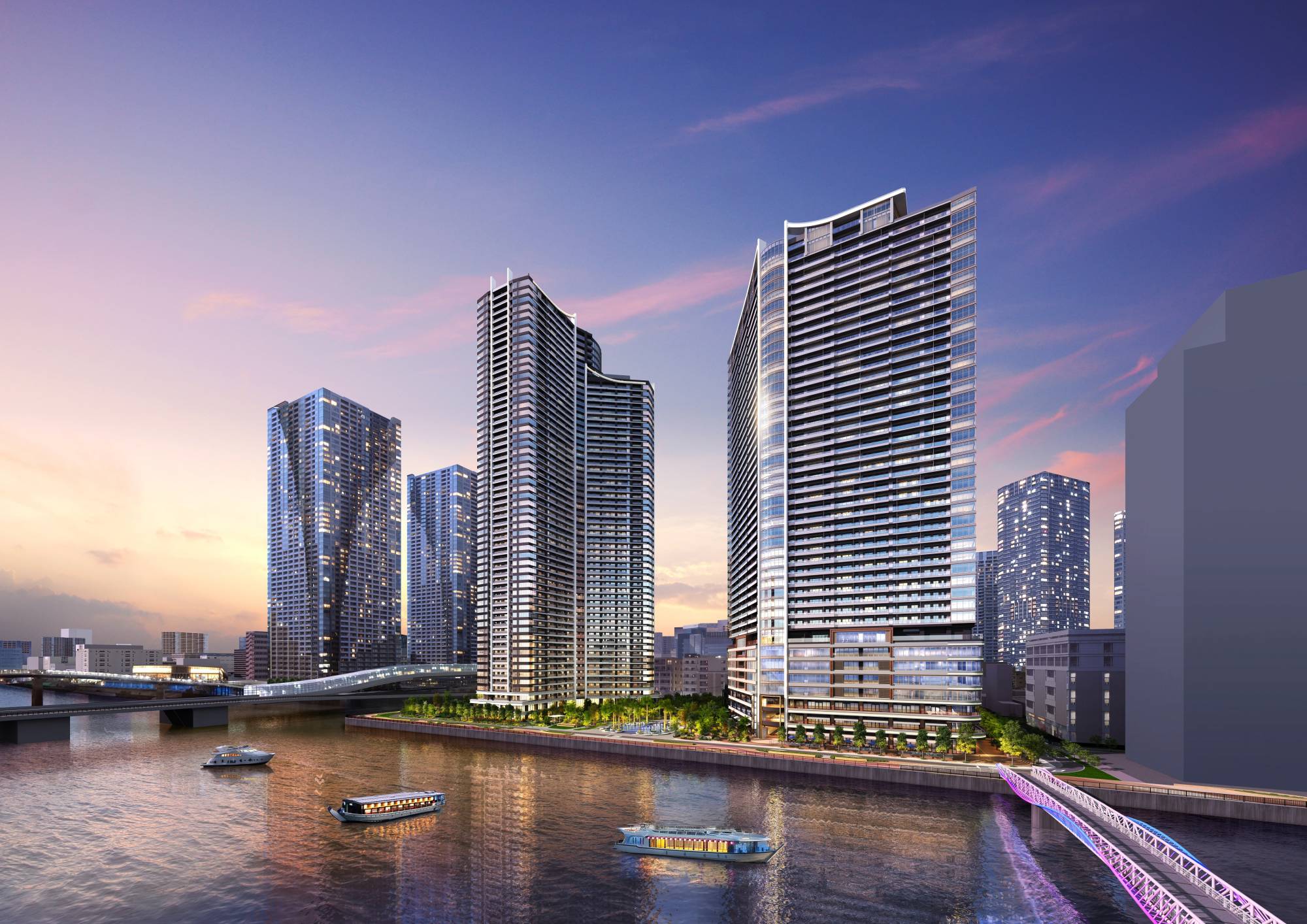


In September, Mitsui Fudosan Residential Co. began selling contracts for Park Tower Kachidoki Mid, a 45-story, 159-meter-tall, 1,100-unit residential and commercial tower being constructed in Kachidoki, a bayside area in central Tokyo. Next to it will stand Park Tower Kachidoki South, a 58-story, 189-meter-tall highrise with 1,655 apartments that is poised to go on sale this summer. Slated for completion in August 2023, the skyscrapers will form part of a three-tower project.
Kachidoki Mid features a 300-square-meter co-working space on the third floor that comes complete with WiFi, private work rooms, a copy machine, a vending machine and a telephone booth. There will also be personal fitness studios equipped with flat screens and speakers, as well as a guest room and a private salon with an essential-oil diffuser and coffee machine for residents to use.
Jun Sugahara, a project leader in Mitsui Fudosan Residential’s planning and sales group, says the firm was initially aiming to start accepting reservations in March last year, but delayed the rollout by six months as the number of new virus infections surged.
“Initially we thought this would be temporary, but when the first state of emergency was declared, we realized we may be in for the long haul,” he says.
“We also noticed that demand for remote work was growing, while people working from home were getting interested in health and fitness. So we decided to tweak our plan to accommodate those needs.”
While common areas in apartment buildings typically emphasize aesthetically pleasing designs over practicality, that may change, Sugahara says.
“For example, lounges would often feature low tables to make them seem more spacious, but that’s detrimental to those wanting to use them for work. New apartments may decide to prioritize remote workers’ needs rather than looks.”
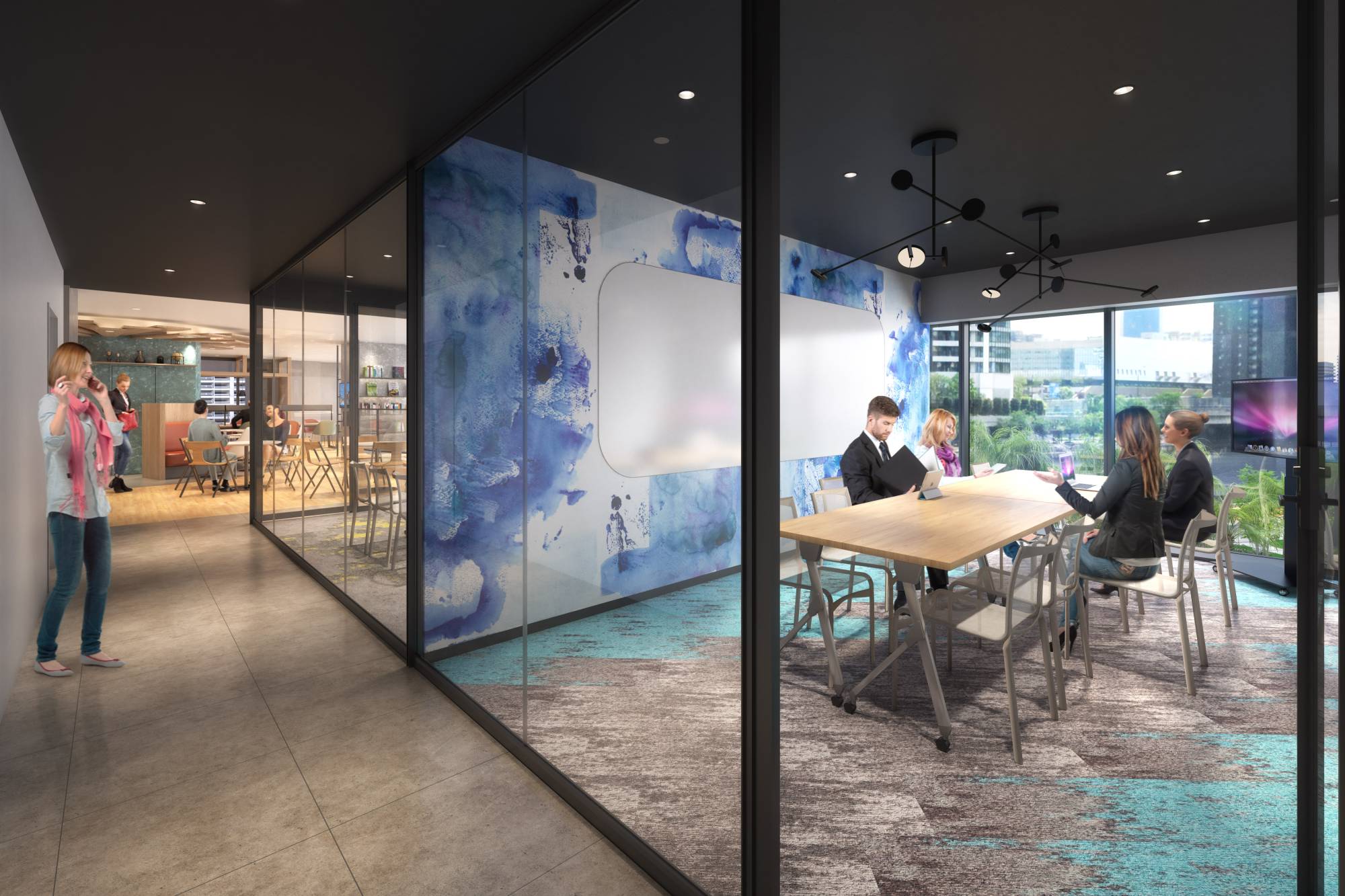


Meanwhile, office space has also been undergoing a slew of changes as companies reduce their real estate footprints and workers spend more time at home.
According to a trend forecast released by office design and renovation firm Vis Co. in February, 31% of the 48 designers it employs raised communication as a keyword when contemplating the post-pandemic workplace. More space will be granted for gatherings and investments will be made in tech infrastructure to ensure smoother online and offline communications, the report said.
Workplaces will also be decentralized, with more firms adopting satellite offices and shared offices, while floor plans will become flexible, the report said.
“Hybrid work models in which employees can continue to work remotely for part of the week will likely continue even after the pandemic,” says Sayaka Fukuda, a spokesperson for Vis. “That means these new design concepts will stick.”
And for those who will be working remotely for the unforeseeable future, the challenge lies in how to make their home work environment as healthy and optimal as possible with limited resources.
According to BackTech Inc., the number of consultations its back pain management app received for stiff shoulders, back pain and headaches, among other symptoms, quadrupled to around 20,000 in September compared to February last year — before the first state of emergency was declared.
In a time of both misinformation and too much information, quality journalism is more crucial than ever.
By subscribing, you can help us get the story right.
SUBSCRIBE NOW


